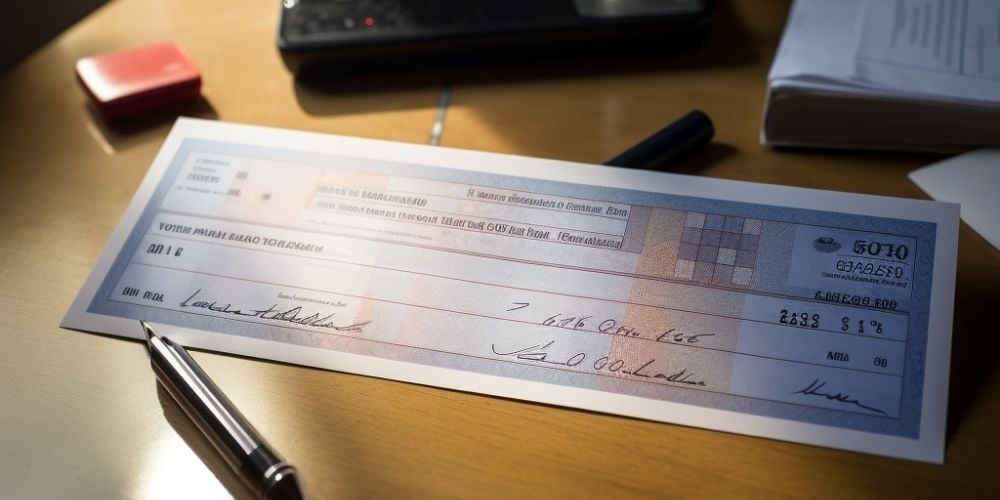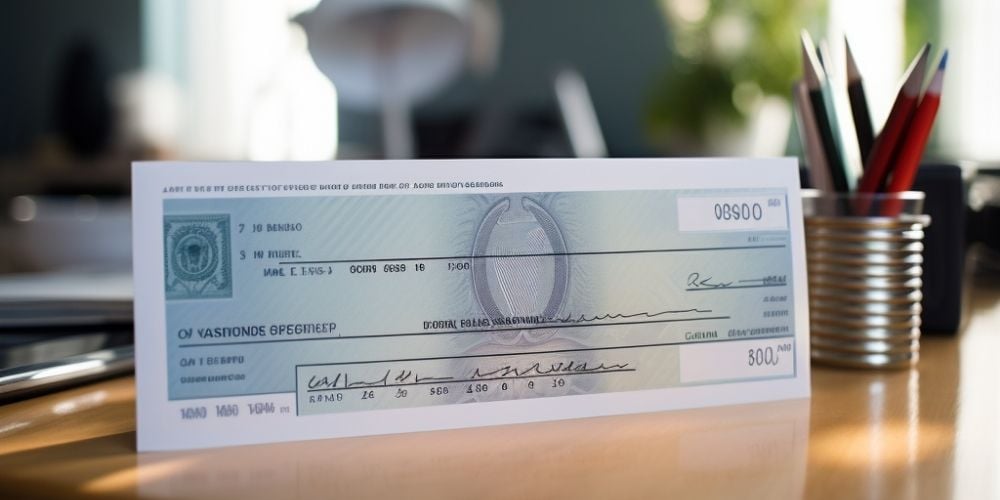Writing checks has long been a common practice for financial transactions. However, there has been some confusion regarding the use of colored ink when writing checks.
So, can you write a check in colored ink?
Well, in this article, we will delve into the guidelines and recommendations surrounding the use of colored ink for writing checks, and we aim to provide a definitive answer to this question.
Additionally, we will explore valid ink colors for check writing, the security aspects to consider, and share best practices to ensure clarity and authenticity. Let’s dive in!
Can You Write a Check in Colored Ink?
The use of standard ink colors, such as black and blue, is generally recommended by financial institutions. Check-writing guidelines often emphasize the importance of legibility.
Therefore, it is crucial to choose an ink color that can be easily read and processed by both humans and machines.
When it comes to writing checks, there are generally accepted rules that ensure their legibility and authenticity.
These guidelines help prevent any potential confusion or fraudulent activities. It is important to adhere to these rules to ensure a smooth transaction.

Valid Ink Colors for Check Writing
Financial institutions have specific ink color preferences to ensure ease of processing and security.
Though black ink remains the preferred choice, some institutions allow the use of blue ink as an alternative.
Black Ink
Black ink is the most widely accepted color for check writing. It offers high contrast against the white background of the check, making it easily readable. Moreover, black ink provides excellent visibility when the check needs to be scanned or photocopied.
Blue Ink
In some cases, financial institutions permit the use of blue ink for writing checks. While not as common as black ink, blue ink provides a viable alternative, maintaining legibility and ensuring smooth processing.
It is important to note that institutions may have specific requirements regarding ink colors, and it is always advisable to check with your own bank or financial institution for their preferred colors.
Can You Write a Check in Red Color?
The use of red ink for writing checks is generally discouraged by financial institutions. The bright color can cause issues when it comes to machine processing and scanning.
Red ink may also raise suspicion due to its association with corrections or alterations. It is best to avoid writing checks in red ink, as it may lead to potential processing delays or rejection.
Can You Write a Check in Blue Color?
As mentioned earlier, blue ink is sometimes accepted for check writing. Its acceptance may vary among financial institutions, but it is generally regarded as a valid alternative to black ink.
Blue ink provides a clear contrast against the check’s background, allowing for legibility and ensuring ease of processing.

Can You Write a Check in Pink Color?
When it comes to check writing, financial institutions generally discourage the use of non-standard ink colors, and pink ink falls into this category.
While pink may seem like an appealing and fun choice, it may introduce complications during check processing and raise concerns about authenticity and security.
The primary concern with writing a check in pink ink is legibility.
Pink ink tends to have less contrast against the white background of a check, making it difficult to read, especially when scanned or photocopied.
Banks and financial institutions rely on automated mechanisms to process checks, and the use of pink ink may hinder these processes, potentially leading to delays or rejection.
Additionally, pink ink may cause confusion or be associated with alterations or corrections.
Because pink is often associated with highlighting or editing, financial institutions may view pink check ink as suspicious, leading to increased scrutiny or rejection of the check.
To avoid any unnecessary scrutiny or inconvenience, it is advisable to avoid writing checks in pink ink.
The Security Aspect of Check Writing
Check fraud is a serious concern, and ink color can play a role in enhancing security.
Criminals engaged in check washing, a process where the ink on a check is removed, may seek out checks written with vulnerable inks.
Using the appropriate ink color can help protect against such fraudulent activities.
Inks that are resistant to tampering and alterations can greatly enhance check security. It is important to select inks that are difficult to remove or modify.
The use of certain ink types, such as gel or pigment-based ink, can provide a higher level of security, making it more difficult for fraudsters to alter the information on a check.
Best Practices for Writing Checks
To ensure legibility, clarity, and authenticity when writing checks, it is recommended to follow these best practices:
- Select the Right Ink and Pen: Choose an ink color approved by your financial institution, typically black or blue. Select a quality pen with a fine or medium tip for precise writing and reduced chances of smudging.
- Fill Out All Fields Clearly: Write clearly and neatly in a consistent style. Avoid rushed handwriting or scribbling, which can lead to misinterpretation.
- Double-Check Accuracy: Before finalizing the check, verify that all the information is accurate, including the recipient’s name, amount, date, and memo.
- Avoid Leaving Blank Spaces: Ensure there are no empty spaces on the check that can be exploited for alterations. Fill in any unused space with a line or “N/A.”
Addressing Frequently Asked Questions
Q: Can You Write a Check in Two Different Ink Colors?
A: Writing a check in two different ink colors is generally not recommended. It may raise suspicion or cause confusion during processing. It is best to write checks with a single ink color, preferably black or blue.
Q: Can You Write a Check in Green or Purple Ink?
A: Financial institutions generally discourage the use of non-standard ink colors, such as green or purple, as they can hinder readability and processing. Stick to the approved ink colors, such as black or blue, for writing checks.
Q: What Is the Best Pen to Prevent Check Washing?
A: To enhance check security and protect against check washing, consider using archival-quality or gel-based pens. These types of pens often use ink that is resistant to alterations and tampering
 .
.
Conclusion
While the use of colored ink for writing checks is allowed in some cases, it is essential to be aware of the guidelines and preferences set by your financial institution.
Black ink remains the most widely accepted option, while blue ink serves as a valid alternative in some cases. It is crucial to prioritize legibility, security, and accuracy when writing checks.
Following best practices and using appropriate inks and pens will help ensure smooth transactions and safeguard against fraudulent activities.
Remember to consult with your bank or financial institution for any specific requirements they may have regarding check writing and ink colors.


 Tags:
Tags:










